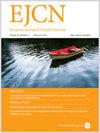Diverse weaning foods and diet patterns at multiple time points during infancy period and their association with neurodevelopmental outcomes in 6-year-old children
IF 3.6
3区 医学
Q2 NUTRITION & DIETETICS
引用次数: 0
Abstract
Understanding the impact of early-life nutritional choices on neurodevelopment in children is a growing area of research. To investigate the association between dietary patterns at multiple timelines and neurodevelopmental outcomes in 6-year-old children. This administrative observational study utilized a merged data from the national health insurance database and the health screening program for children. Information on the diet patterns from infancy to 3 years of age was obtained from parent-administered questionnaires. Dietary pattern clusters of the participants were identified using Polytomous Latent Class Analysis. The outcome was neurodevelopment using the Korean Developmental Screening Test (K-DST) at the age of 6 years. The study identified four distinct clusters among with the 133,243 eligible children (49.6% male, birth weight 3.22 kg, head circumference 42.7 cm at 4 months). The control cluster (53.4%) exhibited a diet including breast milk feeding and a variety of dietary patterns at the age of 1 year. In contrast, cluster 1 (36.0%) showed a skewed dietary pattern at the same age. Cluster 2 (6.6%) displayed diverse dietary patterns at one year but primarily consumed formula at four months, while cluster 3 (4.0%) had reduced dietary diversity and formula feeding. Compared with the control cluster, the adjusted odds ratio for unfavorable development was 1.209 (95% CI, 1.156–1.266) in cluster 1, 1.418 (95% CI, 1.312–1.532) in cluster 2, and 1.741 (95% CI, 1.593–1.903) in cluster 3. These findings remained consistent across individual domains of the K-DST. Dietary patterns during infancy and early childhood may be associated with neurodevelopment at the age of 6 years.

婴儿期多个时间点的不同断奶食物和饮食模式及其与 6 岁儿童神经发育结果的关系。
背景/目的:了解早期营养选择对儿童神经发育的影响是一个不断发展的研究领域。研究对象/方法: 调查 6 岁儿童在不同时间段的饮食模式与神经发育结果之间的关系:这项行政观察研究利用了国家健康保险数据库和儿童健康筛查项目的合并数据。从家长填写的问卷中获得了婴儿期至 3 岁期间的饮食模式信息。采用多态潜类分析法确定了参与者的饮食模式群。研究结果采用韩国发育筛查测试(K-DST)对 6 岁儿童的神经发育情况进行了评估:在 133,243 名符合条件的儿童(49.6% 为男性,出生体重 3.22 千克,4 个月时头围 42.7 厘米)中,研究发现了四个不同的群组。对照组(53.4%)1 岁时的饮食包括母乳喂养和多种饮食模式。相比之下,第 1 组(36.0%)在同年龄时的饮食模式偏向于母乳喂养。第 2 组(6.6%)在 1 岁时表现出多样化的饮食模式,但在 4 个月时主要食用配方奶粉,而第 3 组(4.0%)的饮食多样性和配方奶粉喂养减少。与对照组相比,第 1 组的不利发育调整后几率为 1.209(95% CI,1.156-1.266),第 2 组为 1.418(95% CI,1.312-1.532),第 3 组为 1.741(95% CI,1.593-1.903)。这些结果在 K-DST 的各个领域中保持一致:结论:婴幼儿时期的饮食模式可能与 6 岁时的神经发育有关。
本文章由计算机程序翻译,如有差异,请以英文原文为准。
求助全文
约1分钟内获得全文
求助全文
来源期刊
CiteScore
10.60
自引率
2.10%
发文量
189
审稿时长
3-6 weeks
期刊介绍:
The European Journal of Clinical Nutrition (EJCN) is an international, peer-reviewed journal covering all aspects of human and clinical nutrition. The journal welcomes original research, reviews, case reports and brief communications based on clinical, metabolic and epidemiological studies that describe methodologies, mechanisms, associations and benefits of nutritional interventions for clinical disease and health promotion.
Topics of interest include but are not limited to:
Nutrition and Health (including climate and ecological aspects)
Metabolism & Metabolomics
Genomics and personalized strategies in nutrition
Nutrition during the early life cycle
Health issues and nutrition in the elderly
Phenotyping in clinical nutrition
Nutrition in acute and chronic diseases
The double burden of ''malnutrition'': Under-nutrition and Obesity
Prevention of Non Communicable Diseases (NCD)

 求助内容:
求助内容: 应助结果提醒方式:
应助结果提醒方式:


